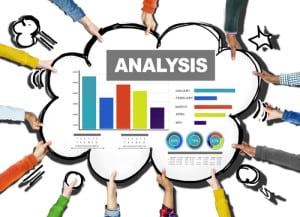
Big Data trends and emerging technologies include self-service data preparation, the cloud, Internet of Things, data-as-a-service, and embedded analytics.
As the amount of data grows from sensors, clickstreams, and social media, businesses often turn to new technologies to capture and analyze that data for business insight. But turning that raw data into business opportunities is tricky, according to a TDWI report on “Emerging Technologies and Methods.” The best practices report, issued in October, identified several Big Data trends and emerging technologies:
1. Self-Service Data Preparation
Customers are looking to move beyond standard business intelligence reports and dashboards and want to perform more self-service data discovery and analytics. Although data preparation is routinely a task handled by IT departments, new software tools that incorporate machine learning and analytics to automate data preparation, find new relationships, and learn about user preferences are on the rise.
In a TDWI survey of 403 data professionals — most of them in IT — 47% said self-service data discovery was important and 32% said it was somewhat important. That was followed by visualization for query analysis (44% and 34%) and self-service dashboard authoring (43% and 33%). We previously covered why self-service data preparation is important here.
2. Embedded Analytics
Although software vendors offer stand-alone data analysis tools, one of the best ways for business professionals to interact with data is not through a dedicated platform but through other applications and services they use, such as customer-relationship management systems.
“Rather than switch to separate applications, users find value in having BI and analytics tightly integrated with point applications that are dedicated to their roles and responsibilities,” TDWI states. Survey respondents overwhelmingly sought such embedded functionality—45 percent said it was very important and 40 percent said it was somewhat important.
3. Data-as-a-Service
As organizations develop new analytics and tools, that data has immense value. For example, financial services firms have been successful in packaging information for clients or even providing access to select data sources to clients.
“Analytics that correlate sales data with location data can enable retailers to work more effectively with partners to ship the right quantities of products to stores where demand is greatest,” according to the report. “Mobile apps provide a myriad of opportunities for organizations to package data insights for consumers and business partners.”
4. Analytic Frontiers: IoT, Text, Location
The use of web analytics and predictive analytics are mainstream but are poised for further growth. Other emerging areas include mobile business intelligence, Big Data visualization, social media analytics, prescriptive analytics, text analytics, geospatial data and of course, IoT data.
Only 18% of respondents use IoT data now, according to TDWI, but 40% plan to use it in the next three years. The use cases are about endless: predictive maintenance in the industrial sector; power production; building-energy management; smart cities; healthcare; construction-site management; and so on.
5. Taking Things to the Cloud
Only 27% of respondents used data from public clouds, but 33 percent are planning to do in the next three years. “Part of this is related to the reality of ever increasing amounts of disparate data, a lot of which might be generated in the public cloud,” said Fern Halper, director of TDWI Research for advanced analytics. Another factor is that organizations may want to use the cloud to trim large datasets.
Of survey respondents using the cloud, 35% used or planned to use it for data warehouse purposes. Approximately 19% were planning to use Hadoop in the cloud to manage their data. “Hadoop and the cloud (and Hadoop in the cloud) are all becoming part of a forward-looking organization’s hybrid data architecture,” according to the TDWI report.
Want more? Check out our most-read content:
Frontiers in Artificial Intelligence for the IoT: White Paper
Why Machine Learning Is Crucial for Predictive Maintenance
Deciphering the Payments Dataverse in Real-Time
Liked this article? Share it with your colleagues!





























